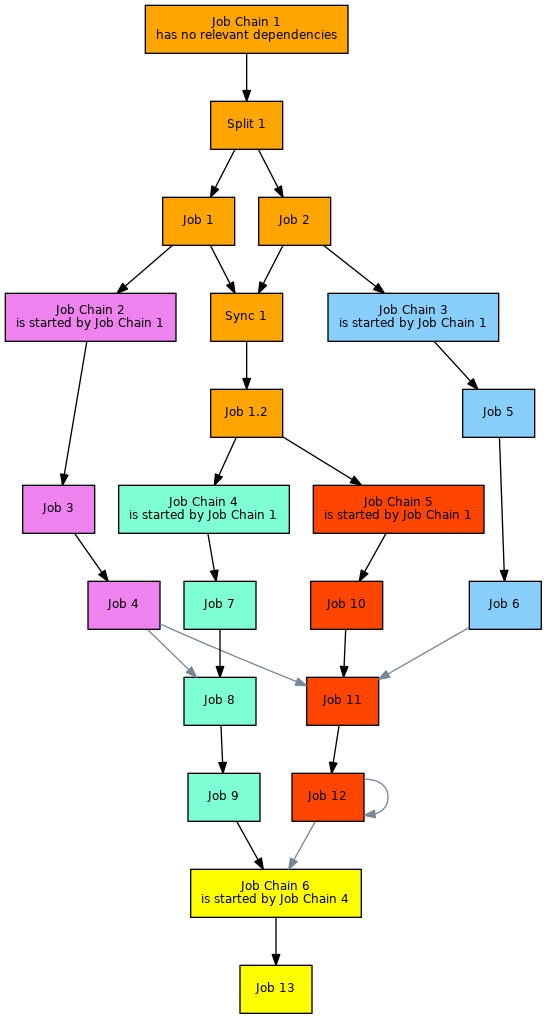You are viewing an old version of this page. View the current version.
Compare with Current
View Page History
« Previous
Version 9
Next »
Scope
- Use Case:
- Consider the situation where:
- A job chain is to start at a number of parallel job chains
- Subsequent jobs in started job chains check if jobs from parallel chains completed successfully.
- Usually a split & sync pattern is used for similar use cases, however, synchronizing includes that both jobs have to be completed.
- Instead the current use case is about check and control if a job of a parallel chain has completed without forcing both jobs to run synchronously.
Solution
- Download: final_chain_job_chain_history.zip
- Extract the archive to a folder in your JobScheduler installation named
./config/live. - The archive will extract the files to a sub-folder
parallel_job_chain_control. - Note that you can store the sample files in any folder you like.
Pattern
Implementation
Components
- The solution contains six job chains:
JobChain1 runs Job1 and Job2 in parallel.- On successful completion of
Job1 then JobChain2 is run - On successful completion of
Job2 then JobChain3 is run
JobChain2 runs Job3 and Job4JobChain3 runs Job5 and Job6JobChain4 runs after successful completion of JobChain1JobChain4 runs Job7, Job8, Job9Job7 runs 1stJob8 runs once Job7 and Job4 have run successfully
JobChain5 runs after successful completion of JobChain1JobChain5 runs Job10, Job11 and Job12Job10 runs 1stJob11 runs once Job10, Job4 and Job6 have run successfullyJob12 runs once Job11 has completed successfully
JobChain6 runs once Job9 and Job12 have completed successfully
Usage
- Positive Check
- Add an order to
job_chain_A using JOC's Add Order context menu.- The order should pass through the job chain without errors.
- Add an order to
job_chain_B using JOC's Add Order context menu.- The order should also pass through the job chain without errors.
- Add an order to
job_chain_Z using JOC's Add Order context menu.- The order should pass through the job chain without errors as all pre-conditions are met.
- Negative Check
- Modify the job
do_something_job_chain_A to include an error, e.g. by adding the command exit 1 as the final line in the job script. - Add an order to
job_chain_A:
- The order should proceed with an error.
- Add an order to
job_chain_Z- The order should proceed with an error that is visible in the order log. This error will state that the predecessor job did not complete successfully.
- The order will be set back and will be repeated according to the setback intervals that have been specified for the job
check_predecessor_job_chain_Z.
- Removing the modification to job
do_something_job_chain_A and adding an order to job_chain_A that then runs successfully should result in a successful run of job_chain_Z - either by a new order added to job_chain_Z or by the next execution of the previous order that has been set back.
See also
